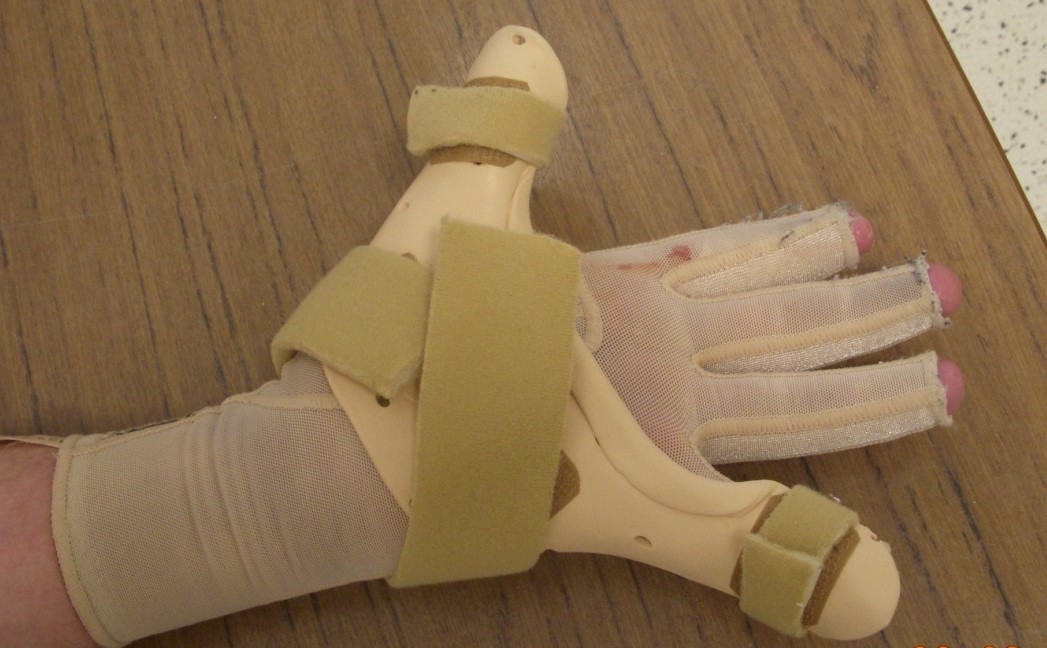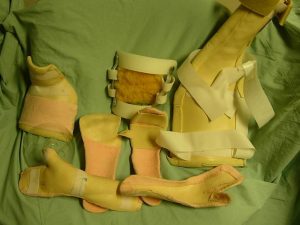Wearing splints for burn injuries

Wearing a splint for a burn injury
Why do I need to wear a splint?
There are multiple reasons why you may need to wear a splint. It will depend on what area of your body is burned; how deep the burn is; if you are able to actively do stretches; or if you need to have a joint prevented from moving.
When burn injuries heal, the body commonly reacts by making scars that have the tendency to tighten and cause the skin to lose its ability to stretch and move as it would normally do. Splints may be worn to hold a constant stretch on tight skin and scar tissue across or near a joint. This will help prevent any loss of movement.
You may need to wear a splint
- if you are unable to do the stretches and exercises yourself. This could be for the period you were in intensive care and are sedated and unable to move yourself. It could be when you are sleeping in the case that without the splint you wake up in the morning with a tight and stiff joint and less movement.
- to stop the new skin moving after a skin grafting operation. This is most commonly for 5-7 days after the surgery.
- to protect a damaged or exposed tendon or joint. The splint will stop the joint or tendon from moving and help prevent further damage.
If the person is not able to carry out an exercise stretching routine for other reasons such as a small child or having a disability that prevents doing the stretches to keep movement at its best.
What are splints made from?
Splints can be made from many different materials such as thermoplastic, Plaster of Paris, metal, fabric or combinations of these.
What kinds of splints are there?

There are many types of splints for just about every area of the body depending on what area is burned. They can be for the mouth, neck, shoulders, arms, hands, hips, knees and feet. What kind of splint is needed will change over time and as you are recovering. Your therapist will prescribe what splint needs to be worn and will most likely be regularly checking the splint to make sure it is doing what it is meant to.
How can I make putting on my splints easier?
Although there is a degree of discomfort in wearing splints, the targeted body parts should not need to be ‘forced’ onto the splint. It is advised that you do your range of motion exercises first before putting on your splint.
How do I look after my splints?
If you have splints to wear after you leave the hospital your therapist will have given you a schedule on when to wear the splints and how to care for them. Daily cleaning of splints is necessary. How you clean the splint will depend on which splint it is and what it is made from. Your therapist will advise you on how to look after your splints.
What do I need to do to make sure my splints are doing their job?
When putting a splint on you need to make sure it fits snuggly as it did when the therapist made the splint for you. If it is not fitting snuggly it may be because it has not been put on on properly or because the splint is no longer doing its job because your movement has changed, your swelling has changed or gone, you have bulky dressings, etc.
When should I seek help?
If your skin is breaking down and new wounds are appearing it may be due to the splint. This is a reason to contact the therapist that prescribed the splint for you so they can review the splint to make sure it is fitting properly and doing the job it was meant to do.